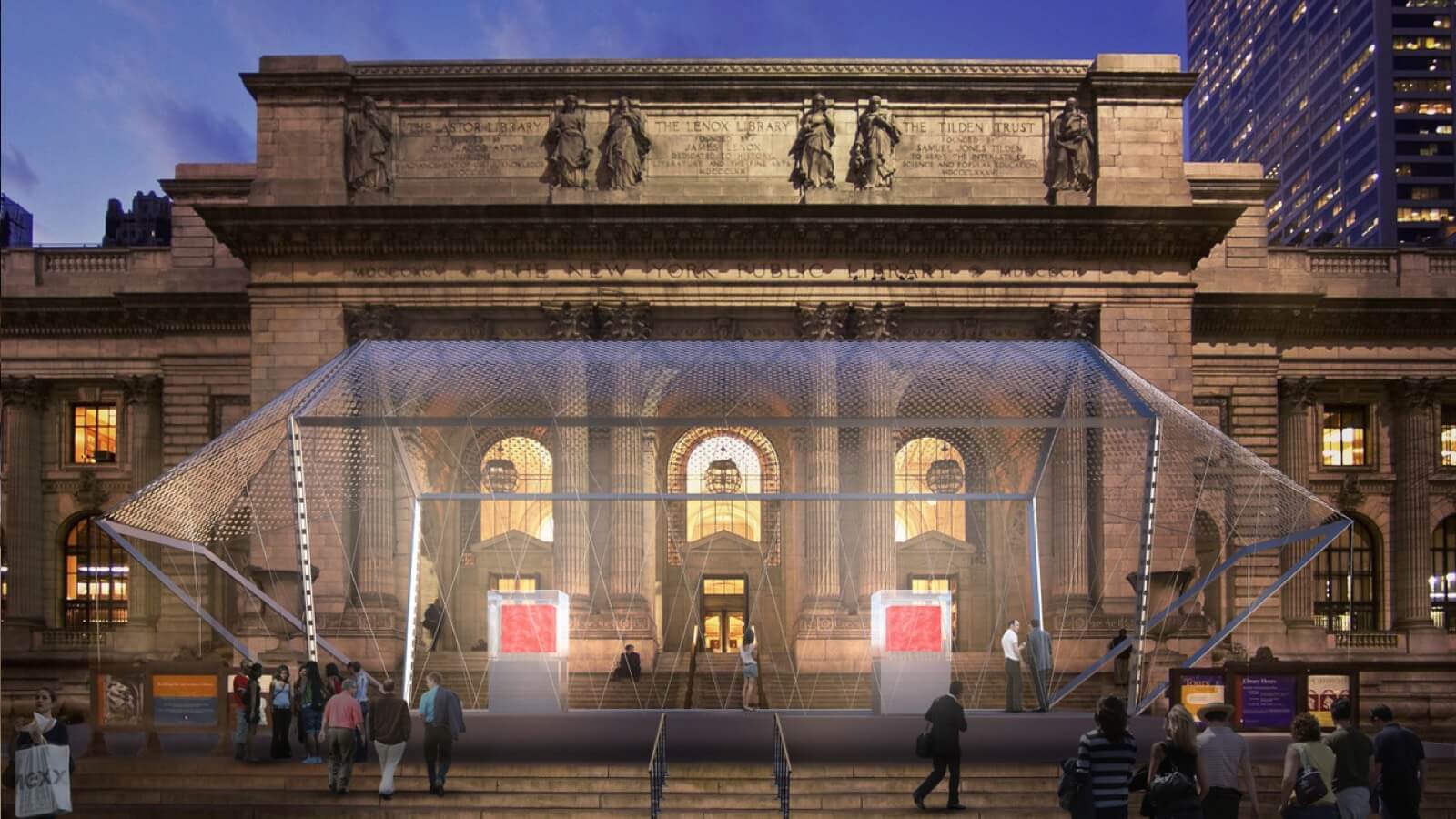
Two years from now, a pair of big red blocks by artist Marc Quinn will appear in front of the New York Public Library—the first major work of public art to be installed in front of one of the city’s iconic buildings. Will it be an architectural marvel like Isamu Noguchi’s Red Cube in Lower Manhattan? Or perhaps a work of metal Minimalism à la Donald Judd?
No. Instead, Quinn’s cubes will be composed of several hundred pounds of frozen blood—an intentionally dramatic vision aimed at calling attention to the international refugee crisis, which the artist considers the most pressing sociopolitical issue of our time.
In 2021, the two blocks in Quinn’s Our Blood (originally titled Odyssey) will sit next to each other in a transparent Norman Foster-designed pavilion meant to evoke a refugee tent. One cube will be filled with blood donations from refugees, while the other will include the blood of non-refugees. Which one is which will remain a mystery—not even the artist himself will know—as a reminder that, on a biological level, we’re all the same. Meanwhile, video interviews from the 10,000 blood donors—from Syrian refugees to celebrities like Kate Moss and Paul McCartney—will play on billboards and video screens across the city.
After its tenure at the New York Public Library, the work will travel the world. But since the very beginning, Quinn knew the project had to begin in New York.
“New York is a fault line,” he tells artnet News from a bench in Madison Square Park. “The whole of America is built on refugees, and suddenly it’s a country that’s in denial of that. Nowhere is that clearer than in this city.”
Marc Quinn, Self (1991). Photo courtesy of the artist.
Quinn expects the work to provoke mixed reactions: Why take from refugees when so much has been taken from them already? Why waste so much blood on art when it could go to an organization like the Red Cross?
The artist has an answers to these questions, but says that his opinion isn’t the one that matters. Long before the project took shape, Quinn visited refugee camps throughout Europe to discuss his idea, at which point he realized “that the only important thing is what refugees think.”
“They said they couldn’t work, they couldn’t contribute to society, they couldn’t help people, they don’t have any money,” he says. “Yet, their body can give something that can help someone else. It’s an empowering gesture, to no longer be a victim but to be someone who has agency.”
Marc Quinn unveils his new installation at Somerset House in 2015 in London, England. Photo by Ben Pruchnie/Getty Images.
Quinn also welcomes a public debate. “When you put content in the public realm, people rise to the occasion. Even those who might feel that they’re excluded from the art world—if you actually put thought-provoking art in front of their eyes, they do have opinions, and those opinions are very valid and very important,” he says. “It’s a way of widening the outreach of art and getting people to think about things in a different way.”
This isn’t Quinn’s first time employing blood as material. In 1991, he debuted the first iteration of Self, a sculptural bust composed of 10 pints of his own frozen blood, and he has since made a new version of the work every five years.
“When I first made Self it was during the AIDS crisis, when people didn’t know what the virus was. Blood from the inside of your body was about as charged as it could be,” he says. “Having that paradox of material which is potentially life and death at the same time, to me, it’s this amazing thing. It’s a symbol of how the body regenerates and how we can change. It’s a symbol of sculpture in a way, of the transformation of art.”
Large-scale blood drives, funded by private donors, will be organized around the world in advance of the project. Monetary donations are also welcome: Half the money raised will be given to the International Rescue Committee, a global organization that provides aid to humanitarian crises, while the other half will be distributed to various refugee organizations through Quinn’s own charity, Human Love.
Those interested in donating—blood or money—to Quinn’s cause can sign up online at ourblood.org.